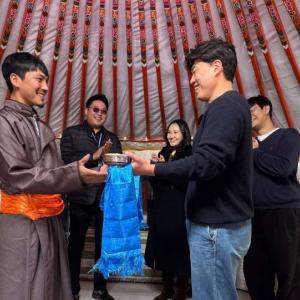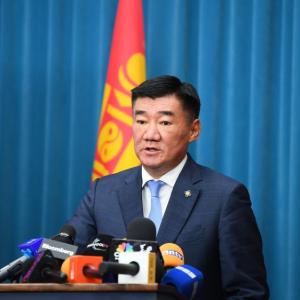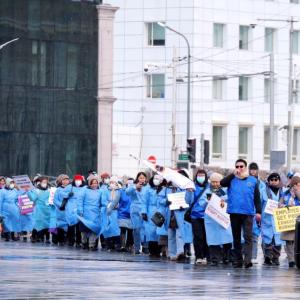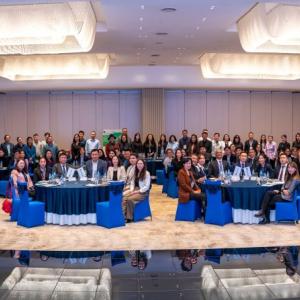Batkhuu Erdenechuluun: I Strive to Give the Feeling of Beautiful Nature of Mongolia through Photography
The Mongol Messenger
Arkhangai, February 27, 2024. /MONTSAME/. The reporter of MONTSAME Mongolian National News Agency in Arkhangai aimag interviewed photographer Batkhuu Erdenechuluun. Born and raised in Arkhangai aimag, Batkhuu's ability to imbue his photographs with a sense of emotion and storytelling sets him apart from others.
-The interview was originally planned for yesterday, but you delayed due to work in the mountains.
As a wildlife photographer, fresh snow presents a prime opportunity that I wouldn't miss for anything. Tracking animal footprints, witnessing their fur glisten under the sunlight against the backdrop of pristine snow, and capturing the vibrant winter landscape enveloped in crisp, clear air—it's undeniably the peak season for me.
Now, while Mongolia has a long winter, it passes quickly for the wild animals. Interestingly, their fur is at its most beautiful, fluffy, and silky between December and February. After that, the quality deteriorates and becomes less visually appealing in photos.
-What animal did you manage to capture this time?
-Unfortunately, no photos this time. I am targeting at catching a picture of Felidae group animals, such as leopards, manuuls, lynxes, and European wild cats. Currently, I am chasing the lynx, and often travel to track its footprints on fresh snow. It is interesting how encounters with other animals often occur while pursuing a specific one. The footprints lead to the animal. During the summertime when grasses are grown, you cannot see much. Even if you meet the animal it is almost impossible to see clearly through tree branches. During the winter time, carnivorous and herbivore animals are all naturally on the move, looking for food, so the probability of encountering those rises.
-It requires patience and bravery to seek traces of wild animals and chase them, climbing the mountain carrying those big cameras and lenses, right?
-Sure. It is tough to take animal photos during the winter time. You are bundled up in layers, carrying heavy lenses and a camera, and need to watch your step on slippery surfaces. There is always a risk of damaging equipment, so you have to be careful, especially when tracking wild animals. There is also the constant concern of protecting your cameras from damage, which means prioritizing the safety of your equipment over yourself in case of a fall. Sometimes accidents happen and you break those. Tracking down a wild animal puts you in a big risk. Preparation is crucial; you need to thoroughly research the behavior of the animals you're seeking to photograph. For example, understanding that lynxes are generally non-aggressive can help alleviate fears.

Conversely, when dealing with potentially dangerous animals like wolves, assessing the risk level is paramount. You need to be aware of ovulation time along with the geographical features of the location and have a detailed plan ahead of your trip so that not get into a bunch of hungry wolves, for example. Time estimation is also important. Slippery road, walking on the rocky pathways, and the time required to return need to be carefully calculated.

-When photographing wildlife, as soon as you target the camera, do you simultaneously consider lighting, shadow, and angles, and imagine the composition?
-Of course. In the Gobi, there are more opportunities to capture good photos due to its flat terrain. In the Khangai area, it is much more challenging to take photographs. The forests in the Khangai region are typically situated on the north-facing slopes of the mountains, where conditions can be shadowy and dark. Ultimately, the quality of photographs depends on the hard work and luck of the photographer.
-Have you tried counting the pictures you took on the mountain with courage and patience?
-I have not kept count of the exact number, but I definitely have more bird photos than animal photos. Taking pictures of animals is just much harder and trickier. To get a good shot, you really need to know the whole mountain, like where the animal hangs out in the morning and where you should wait patiently. It is almost like using hunting techniques and strategies! There is a sense of pride in capturing animals and documenting them. I believe these photos can teach younger generations about their existence and inspire them to love, care for, and protect them. It is true that humans tend to fear what they do not know, so raising awareness is crucial. Sadly, people often leave trash behind after camping trips. But when you have a beautiful picture of that same place, it can evoke appreciation and encourage others to take care of it too.
-How far have you traveled for photo shooting during the winter time?
-One can venture far for a photoshoot, but it is crucial to be mindful of the challenges involved. I have journeyed several times to Khangai and Tsahir soums in pursuit of capturing a photo of a snow leopard. These elusive creatures prey on mountain goats. Once, I went to Tsahir soum. The mountains seemed deceptively close, yet the climb left me weary. Suddenly, a wolf appeared on my right side. Seizing the moment, I shot a photo as the wolves pursued a group of ibexes. Photographers are very greedy. The pursuit led to the wolves claiming an ibex, prompting me to chase after them for a shot of the feeding frenzy. After a long run, I left with no wolves or ibexes. On the way back I took the wrong path and ran into a ravine. I thought of walking back but I was exhausted and feeling drained, I felt immobilized, unable to ascend or descend. Nightfall descended, leaving me stranded. The only way was to slide through the snowy rocky downhill. At that time, every hurdle, including my bag, seemed to hinder me. However, I managed to get down by pulling myself slowly. These kinds of accidents often occur.

Last autumn, I embarked on a deer photoshoot, only to take a wrong turn on the return journey, forcing me to seek refuge in a stranger's winter dwelling for the night. During the wintertime, there is no such chance, so you have to keep going no matter what.

-Have you thought of keeping it in secret the location of wild animals in Arkhangai aimag before you present it to the public?
-Locals know the presence of rare animals. When I take a picture of a wild animal, I try to hide the location by excluding the background mountain from the photo, for instance. As a photo can tell much it is better to avoid letting the location be public.
-Photos you have taken are unique. Moreover, some are taken from a very close distance which has a more cognitive matter. What do you want to express?
-Photographers’ job always needs a scenario whether it’s about nature or animals.
-Scenario?
-You don't just take a picture of anything. Let's consider my plan for this year. To capture a photo of the mountain, I need to establish a visionary plan. This plan should include the specific mountain I intend to reach, the month and time conducive to producing a beautiful photo (whether in the morning or evening), the ideal angle from which to capture it, and whether the composition will include elements such as horses, cattle, or humans against the mountain backdrop to imbue the scene with life. All these aspects need to be carefully planned. Then I go. Khangai area animal photo shooting should happen in Khangai.
The photographer shall give the right expression with his photo, knowing what animal photo should be taken during winter and summer time. Photos I have taken are mostly about live experiences, in which horses are emphasized.
When you take a horse picture you have to decide how to improvise during the winter season, and what horse breed shall be used, and the same goes with the summer photo session. All this planning is made to provide the right information to people. For instance, if in a photo of two men riding a horse, which represents the Mongolian lifestyle, one of the men wears a baseball cap, it would not be the right photo. Therefore, every detail should be right and complete to be informative.

Today, everyone carries a camera and can take a photo of anything. To stand out from them, professional photographers have to conduct complete research, which will let us know when, how, and what photo should be taken.
-Photographers use their pure natural intuition in setting composition, color, season, and angle. What you would like us to see in it?
- As I mentioned earlier, my goal is to foster an understanding among people about the importance of protecting and loving nature, including mountains, rivers, animals, and birds, as well as preserving the Mongolian lifestyle, culture, and traditions through my photographs.
Moreover, it documents the current time we live in. In the next century, it can be different. These photos will serve as a piece of historical evidence.

-When I saw the photo exhibition and photo album dedicated to the 100th anniversary of Arkhangai aimag, I noticed that you emphasized yak.

-I have a passion for capturing moments in photos, always striving to seize that perfect instant on camera. Yaks, when combined with the beauty of nature, create stunning and invigorating scenes. Witnessing yaks in the high mountains against a backdrop of breathtaking landscapes is truly fascinating. Photography can be challenging, but the satisfaction of capturing the desired shot is immensely rewarding.

-How long did you follow yaks to capture the moment you visualized?
- Photographing nature, animals or birds is the job for a hardworking man. Because it needs planning throughout all four seasons. You won’t be able to sleep in the morning. You wake up before sunrise and shoot the photo you want. It becomes not suitable for photo shooting after sunrise around 10, or 11 am. Good photos are produced in a very short limited time.
-Bulgan Mountain now has ibexes. How often do you go there to photograph them?
-Initially, I was concerned that the ibexes introduced to Bulgan Mountain would not survive and adapt to the new environment. However, observing them closely since last September, I have been heartened to see them adjusting well. They adapted quickly because they were brought here from the Bogd Mountain, where they were accustomed to similar conditions. They climb Bulgan Mountain and Tsogt-Uul Mountain up to the rocky slopes, and predators like dogs cannot catch them. Our conservationists are feeding them with fodder and grass. The only problematic issue now is humans. When snow falls, the pasture is narrowed, and cattle pasture has to be shared with ibexes. Upon observing them, it seems they stress out because of humans and cannot graze peacefully. We all must protect and preserve these unique species.

For the past 5-6 years, I have traveled back and forth to the Bulgan Mountain many times. The trees have been heavily cut in the backdrop of the mountain. The bark of the birch tree is taken by local woodworkers and carpenters. Young birch trees are felled by people who craft axe handles. It's a profoundly saddening scene unfolding right there. Animals in the frontage of Bulgan Mountain have had to escape due to humans. Fortunately, the arrival of the ibexes has breathed new life into Bulgan Mountain, and the animals and birds are gathering back together. It is a wonderful thing that we have these animals and birds to observe and we now have mountain guardians.

-Some viewers find your photos heartwarming, while others express disbelief and suspect editing. To clarify, how much editing do you typically do to your photos?
-I strive to provide accurate information to people. Nature photos should not be edited. Nature itself undergoes constant change, resulting in a myriad of colors. I aim at capturing these moments on camera, demonstrating the beauty that many non-photographers may find hard to believe.

-Your photo of Bulgan Mountain from home is magnificent, but the fog and blue hues made me think it was heavily edited. Did you enhance the colors, or is that the raw beauty of the mountain?

- The angle you shoot from is crucial in photography! Taking the same mountain shot from the front is not the only option. Different angles can capture different sun and fog colors, revealing new beauty. Photographers who stick to "safe" frontal shots might miss these possibilities. It is vital to explore unique angles, break free from "people-pleasing" photography, and push creative boundaries. When I first started photographing Bulgan Mountain, I focused on the front but later explored all angles. This is what I call creating true artwork.
-By the way, what is your profession?
-I am a painter. I draw inspiration from fine art when I take photographs. My mind acts like a canvas, where I envision the composition, color palette, and dynamic elements before capturing the image.
-What initially sparked your interest in photography?
-While I would not have said I was particularly interested in photography at first, returning to my homeland in 2016 definitely changed that. As I spent a lot of time hiking in the mountains, the need for reference sketches for my paintings led me to take nature photos using my phone. What started as a practical tool gradually evolved into a desire to share the beauty of this landscape with a wider audience through photography itself. That is how I transitioned from taking sketches with my phone to actively photographing with dedication.
- How did you develop your skills in using cameras and adjusting settings for photography?
-I learned a lot through YouTube channels, which offer a wealth of information for beginner photographers. Additionally, I gained knowledge from fellow photographers I encountered on my nature walks. One such mentor was B. Tseepil, a senior photographer who generously shared his expertise and accompanied me on numerous photo expeditions.

-What kind of lenses and cameras do you typically use for your photography?
- I tend to switch things up quite often. New camera equipment seems to launch just after I purchase something new, so I often sell the old and upgrade to the latest technology. My choices are primarily driven by necessity. For instance, capturing fast-moving animals like birds requires specific techniques and equipment that can keep up with their speed.

Photography is my life's passion, and I dedicate significant time, money, and resources to it. That is why stolen photos are particularly disheartening.
-In Fall 2023, your photo "Moon Gallop" placed second in the "Mongolian Lifestyle" category of the “Mongolian Landscape” photography competition, organized under the auspices of the President of Mongolia. Was it captured specifically for the competition?
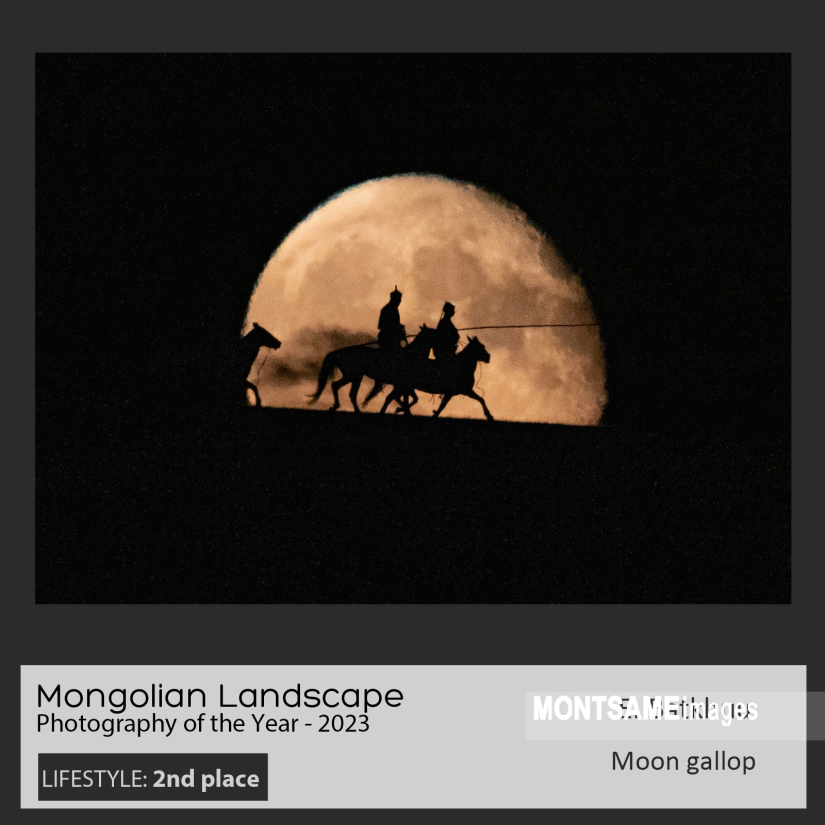
-No, I took the photo earlier and submitted it when the competition was announced. Every shot requires careful composition. I often use silhouettes, utilizing the "golden hour" of sunrise or sunset with a subject in the foreground against the vibrant natural backdrop. Similarly, the moon rises quickly, creating a fleeting moment for capturing. In "Moon Gallop," a horse, a man in traditional Mongolian attire with a hat, and an uurga [lasso pole] create the scene. Preparations involved waiting for a full moon, ensuring the man was in full attire, and planning the location, distance, and timing meticulously.
Initially scheduled for the 15th lunar day, the horseman arrived late. The next day, the moon wasn't clear enough, resulting in blurry shots. Finally, on the third attempt, I achieved the desired result.
I aspire to participate in international competitions, particularly in lifestyle categories with my photos depicting the "Mongolian Lifestyle" and "Wild Life". With around 10 major competitions annually, I believe there's an opportunity to shine. While photos taken in Mongolia by foreign photographers often win in the lifestyle category, I see it as a challenge and believe we can promote Mongolia's unique culture effectively.
-Can you share your short-term and future goals?
-My short-term goal is to participate and win in international photography competitions. In the future, I aim at publishing three photography books: one showing Mongolia's breathtaking nature, another featuring wildlife captured in a unique, almost storybook style, and the third dedicated solely to horses.
-Thank you!
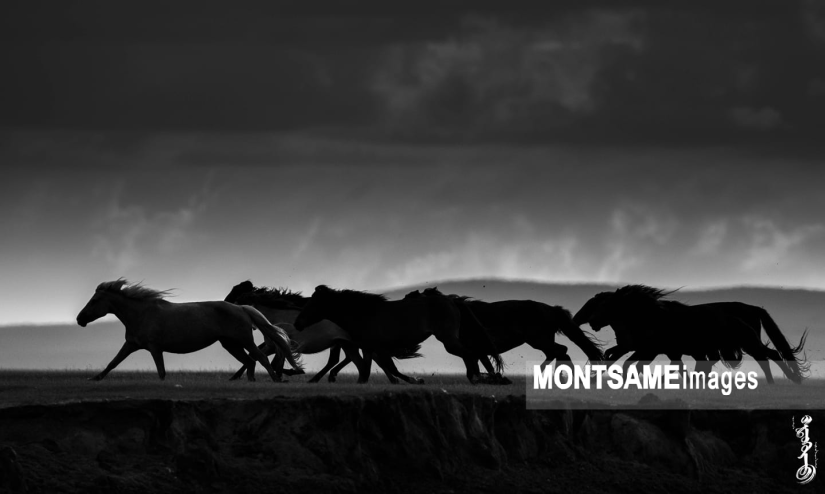
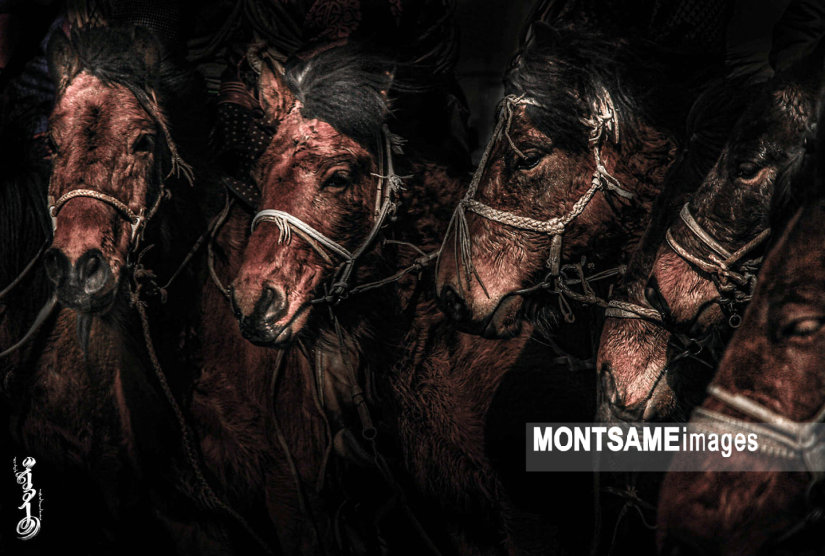
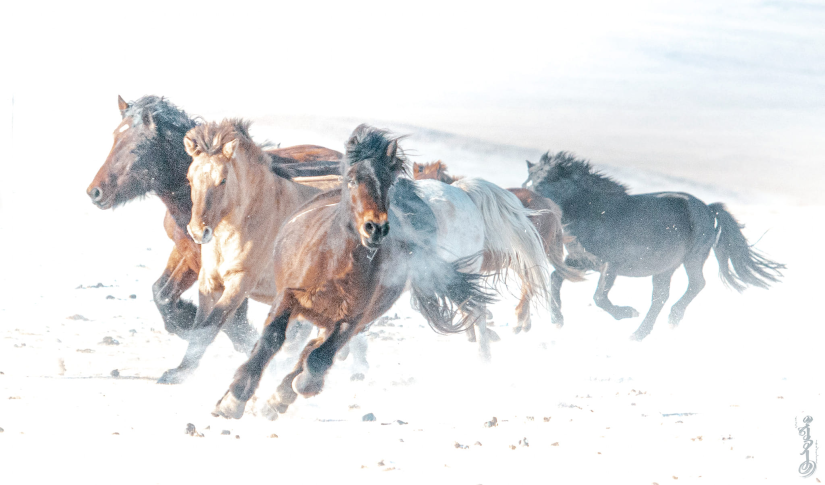



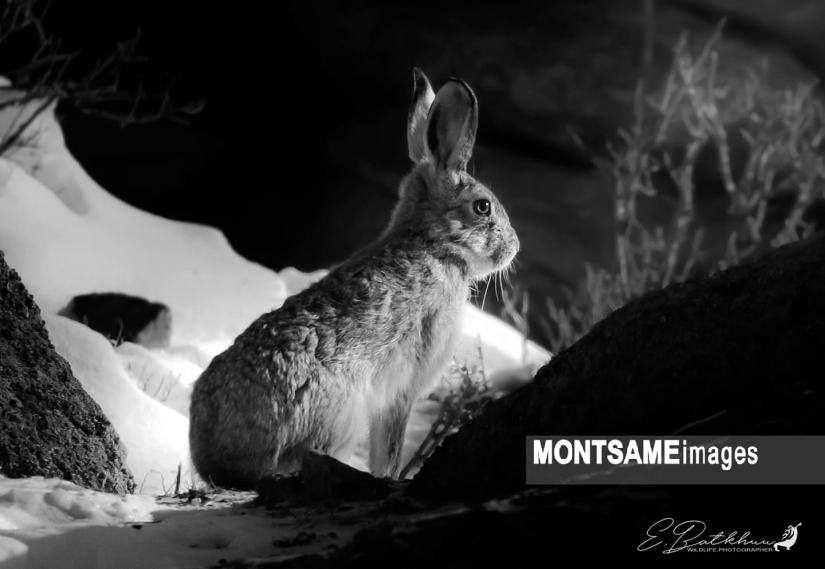



 Ulaanbaatar
Ulaanbaatar






